There are so many different aloes available for the drought-tolerant landscape, but Blue Elf aloe (
Aloe ‘Blue Elf’) offers something that other aloes can’t — it thrives in full sun, including areas that receive hot, reflected heat. Shady spots also pose no problem for this small aloe hybrid. It’s equally at home planted in containers or next to boulders, making it an extremely versatile landscape addition. Its bright orange flowers bring a welcome splash of color to the landscape in late winter into early spring, while its blue-gray leaves look great throughout the year.
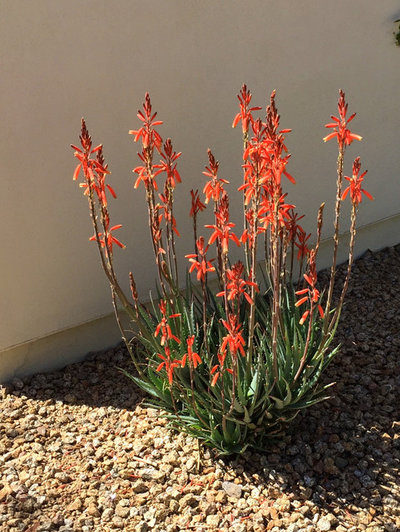
Noelle Johnson Landscape Consulting
Botanical name: Aloe ‘Blue Elf’
Common names: ‘Blue Elf’ aloe, California aloe
Origin: Aloes are native to South Africa, but the parentage of this aloe hybrid is unknown.
Where it will grow: Hardy to 15 degrees Fahrenheit (USDA zone 8; find your zone)
Water requirement: Drought tolerant once established but does best when watered deeply once a month in the summer and once every three weeks in spring and fall; in low-desert gardens, water twice a month spring through fall
Light requirement: Full sun to light shade; including areas with reflected sun
Mature size: Up to 18 inches tall and 2 feet wide
Benefits and tolerances: Drought tolerant; attracts hummingbirds
When to plant: Fall or spring from division
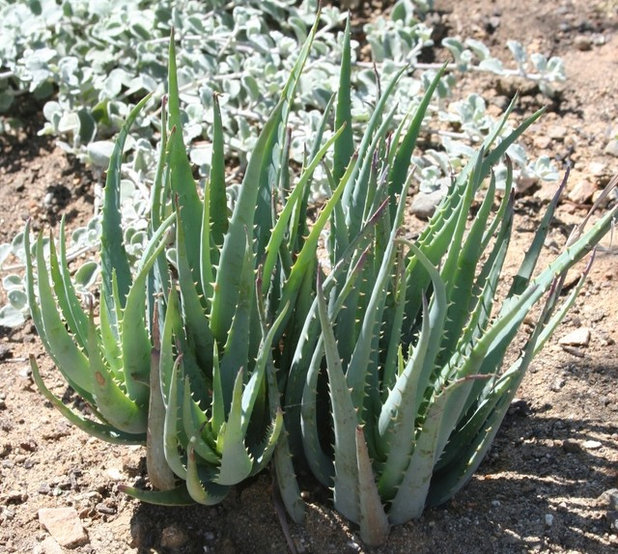
Monrovia
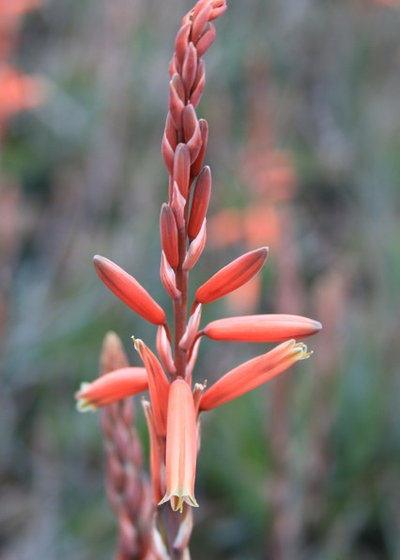
Monrovia
Distinguishing traits. This compact aloe hybrid’s brightly colored flowers and ability to thrive in full, reflected sun and shade, as opposed to the partial shade most other aloes prefer, make it special.
It has 6-inch-long blue-green succulent leaves that have toothed edges. When the plant is not in flower, the blue-gray leaves add a visually cooling touch to the landscape.
Spikes of orange flowers appear in late winter, providing much-needed color when not much else is in bloom. The flowers last through early spring, much to the delight of hummingbirds. The flowering will be more pronounced if ‘Blue Elf’ aloe is planted in a sunny area.
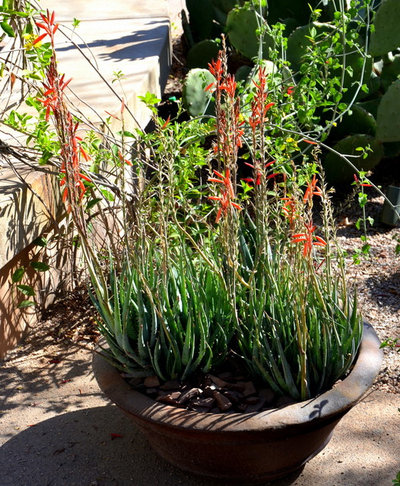
Noelle Johnson Landscape Consulting
How to use it. ‘Blue Elf’ aloe’s versatility is one of the many reasons that it has rapidly become a popular addition to drought-tolerant landscapes.
Succulents, with their low water requirements, are a great choice for containers, and ‘Blue Elf’ aloe is no exception. Plant it in a container by itself or pair it with smaller agaves, such as Victoria agave (
Agave victoria-reginae) or golden barrel cactus (
Echinocactus grusonii).
Anchor the corner of the landscape, such as next to a driveway, with a group of three ‘Blue Elf’ aloes planted around a boulder. Because of its small size and ability to handle hot, reflected sun and shade, this aloe is a great choice for planting in entryways or narrow strips next to sidewalks.
It’s hard to find a place where ‘Blue Elf’ aloe doesn’t work — it’s perfect next to pools, in courtyards and raised planters, and underneath trees that provide filtered shade. The only place it does not do well is where there is heavy, wet soil.
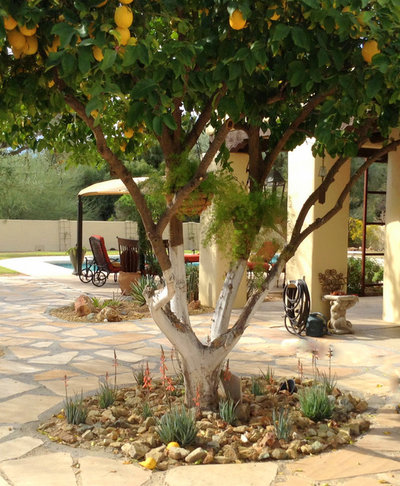
Noelle Johnson Landscape Consulting
Planting notes. Plant it in well-drained soil in full sun or light shade. If you’re planting it in a container, use a planting mix specially formulated for succulents.
‘Blue Elf’ aloe is a great choice for water-wise gardens because of its low water requirement. Monthly supplemental irrigation in spring through fall will improve its appearance and flowering. In low-desert gardens, water to a depth of 1 foot twice a month in spring through fall. Water container plants weekly.
Divide every two to three years in spring. Remove the new, outer growth (offsets) and replant them elsewhere or give them away.
Shown: ‘Blue Elf’ aloe planted in a courtyard underneath a lemon tree





